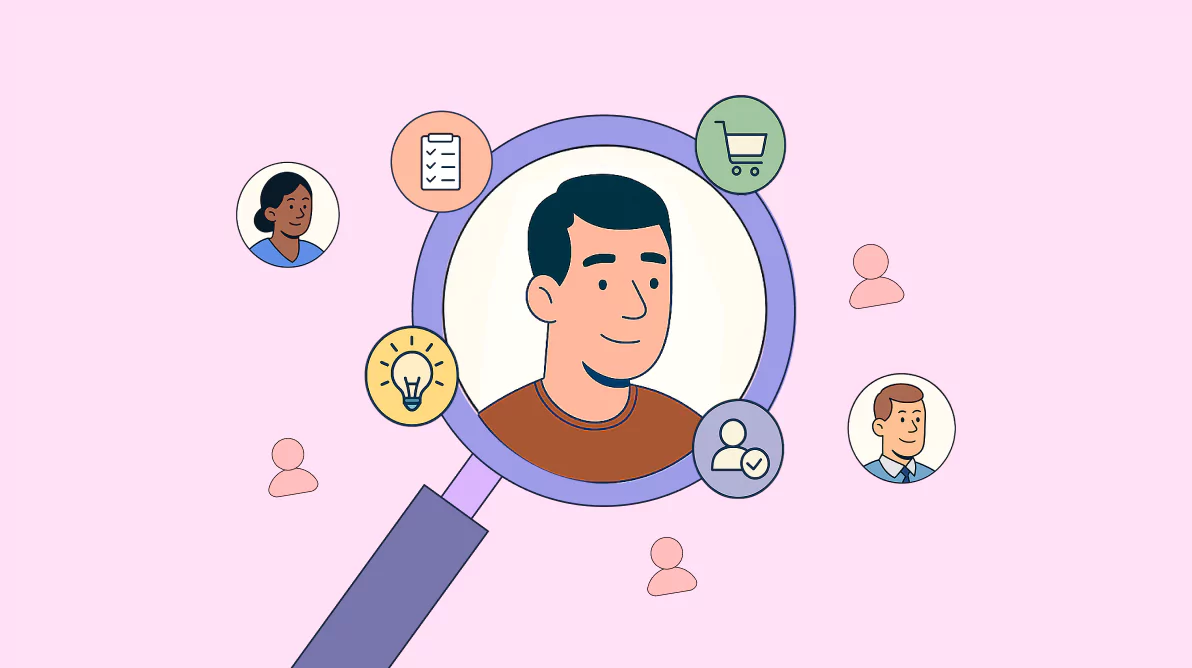Ever wondered why customers choose one brand over another or what really drives someone to hit “Buy Now”?
Customer behavior covers every decision and action your customers take, from recognizing a need to making a purchase, and even what they do afterward.
Understanding what drives customer decisions helps businesses do more than just sell. It enables them to build real connections and influence buying choices.
In this blog article, we’ll discuss what customer behavior is, outline the benefits of behavior analysis, and significant factors that impact consumer buying behavior.
What is customer behavior?
Customer behavior is how people think, feel, and act when deciding what to buy. It includes their shopping habits, preferences, personal background, and the influences around them.
By studying these behaviors, businesses can better understand who their customers are and what drives their choices.
This can help answer important questions like:
- What motivates customers to make a purchase?
- When are they most likely to buy?
- What makes them stay loyal or switch to a competitor?
Understanding customer behavior can help create more targeted marketing, design better products, boost conversions, and build stronger customer relationships.
Types of consumer buying behavior
People don’t shop the same way every time. How they buy depends on what they’re getting, how often they need it, how they feel about it, and how much brands stand out to them.
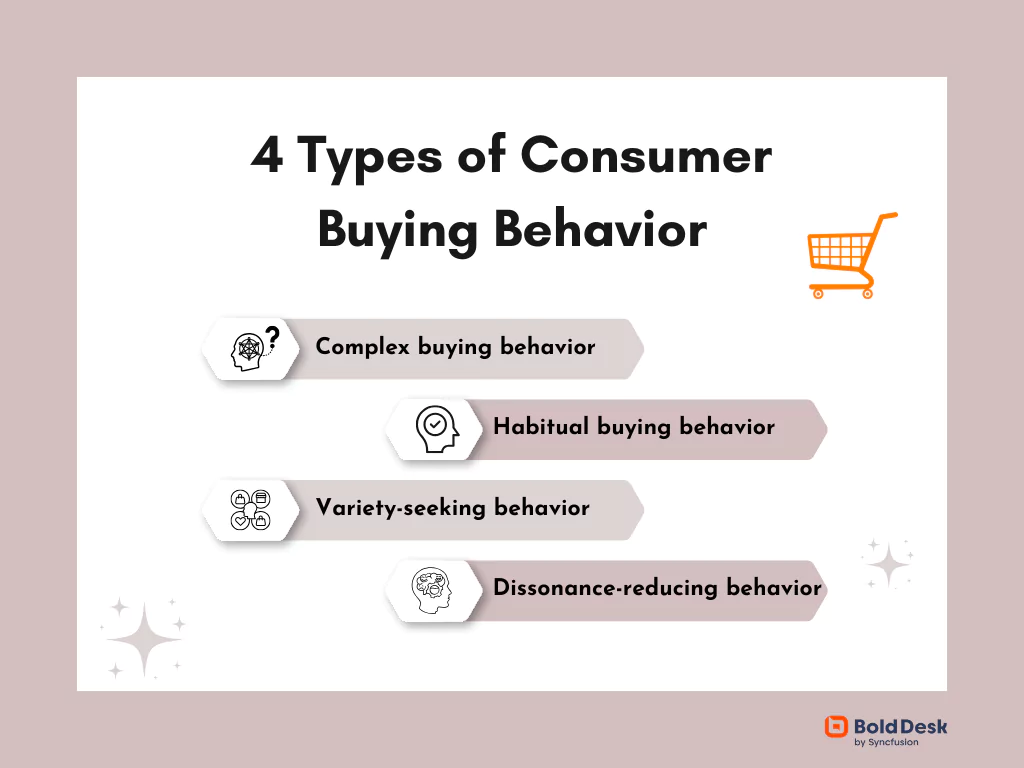
Complex buying behavior
Customers show complex buying behavior when making high-cost or important purchases, with noticeable differences between options.
Because the stakes feel high, they spend more time researching, comparing brands, reading reviews, and carefully weighing their choices.
Example: The purchase of cars, homes
Habitual buying behavior
This type of consumer buying behavior occurs when customers repeatedly purchase a specific item or product.
They perceive a few differences between brands and typically stick to what they’re familiar with, doing minimal or no research.
Example: Buying everyday items like groceries, bread
Variety-seeking behavior
Here, customers don’t think too much before buying, but they notice differences between brands.
They switch brands just to try something new or different, not because they’re unhappy with what they’re currently using.
Example: A person trying new snacks, beverages, or clothing styles
Dissonance-reducing buying behavior
This consumer buying behavior happens when a customer must make an important purchase but doesn’t know much about the product. They also feel the brands are similar.
They may feel uncertain about making the right choice, so they rush their decision. They often choose based on price, convenience, or availability.
Afterward, they may worry about whether they have made the right decision.
Example: The purchase of appliances, furniture
Why understanding consumer behavior is essential for business growth
Consumer behavior is the story behind every decision your customers make. It reveals what influences their choices, how they make decisions, and how they interact with products or services.
Here’s why you should take time to understand your customers’ behavior:
- Helps you enhance marketing strategies: Knowing what drives customer decisions helps brands to tailor their messaging, branding, and promotions to match what really matters to their audience.
- Drives product development and innovation: Insights into customer needs, preferences, and desires guide the creation of products and services that align with market demands. This forward-thinking approach also gives companies a strong competitive edge.
- Increases customer retention: Understanding the triggers behind loyalty allows companies to create meaningful engagement programs that boost satisfaction and encourage long-term relationships.
What factors impact customer behavior modelling?
Many different factors affect customer behavior. Understanding these influences is key to creating effective marketing strategies and providing meaningful customer experiences.
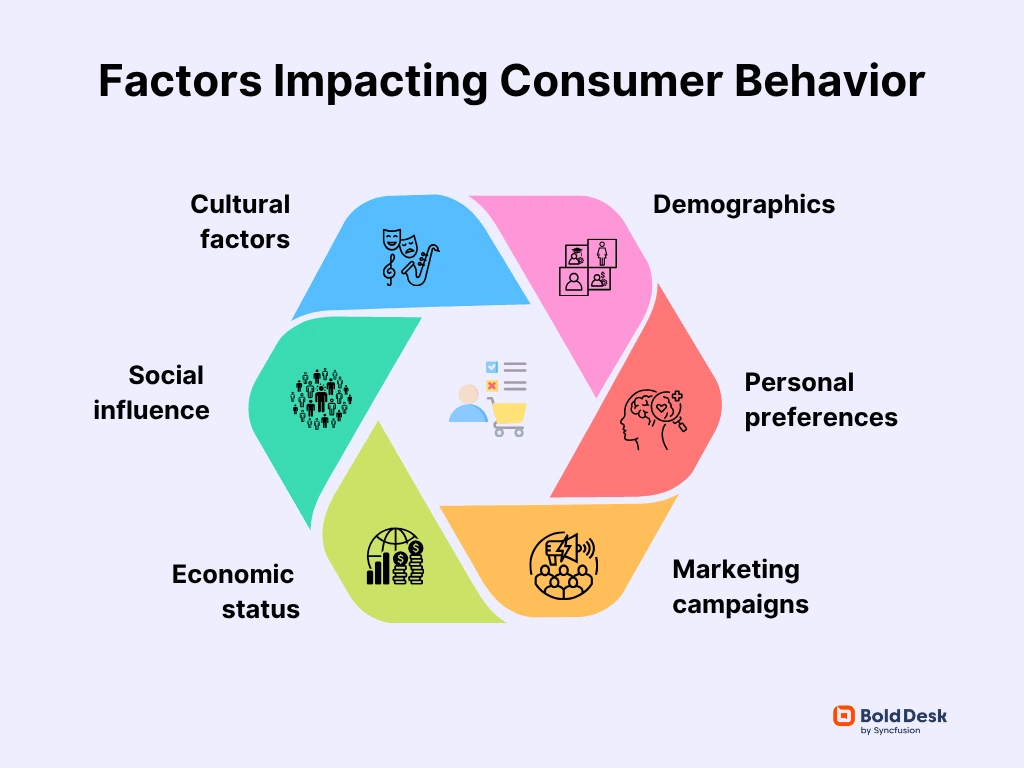
Let’s explore the factors in detail.
Cultural values
Culture sets the foundation for how people think, feel, and act. It includes shared beliefs, norms, traditions, and customs that people learn through social interaction.
Subcultures such as those based on nationality, religion, or geography also play a role in shaping buying behavior.
According to OnePulse, 83% of customers trust community recommendations over ads.
For example, in collectivist cultures like Japan, marketing that emphasizes family or community harmony resonates more strongly than an individual-focused campaign.
Social influence
The opinions and actions of others, family members, coworkers, and even online communities can significantly impact purchase decisions.
In fact, 39% of US consumers report that social factors frequently affect what they buy (TheRoundup).
A consumer’s social role or status (like being a parent, manager, or student) often affects how they perceive and choose products.
Economic status
An individual’s income level, job status, and access to credit influence how much they can spend. When consumers feel financially secure, they’re more likely to spend freely, even on non-essential or luxury items.
But during inflation or economic slowdowns, spending habits shift. Consumers become more cautious, prioritize essentials, and often opt for budget-friendly alternatives.
In a recent study by Attest, 62.3% of consumers in the UK have cancelled subscriptions due to the rising cost of living.
For instance, when the economy is good and income rises, a person may buy a high-end phone like an iPhone. During inflation or tight budgets, they may choose a cheaper option or postpone the purchase.
Demographics
Individual characteristics such as age, profession, lifestyle, or personal interests shape how and why people shop.
For example, a young professional might prioritize convenience and tech features, while older customers may prioritize comfort, cost-effectiveness, and reliability.
That’s why successful marketers personalize their products and messaging to match different consumer profiles and life stages.
Personal factors
Individual preferences often shape how people perceive, evaluate, and respond to brands and products in the marketplace.
These internal factors include:
- Motivation: The inner drive that pushes people to act, often explained by Maslow’s hierarchy of needs (e.g., safety, belonging, self-fulfillment needs)
- Perception: How individuals notice, interpret, and make sense of information about products or brands
- Learning: Changes in behavior resulting from experience
- Beliefs and attitudes: Enduring thoughts and feelings about products, brands, or experiences
95% of all purchasing decisions occur due to an emotional connection (Ignite).
These psychological factors can vary daily, and understanding them helps businesses connect with both the rational and emotional sides of customer decision-making.
Marketing campaigns
58% of consumers report that social media promotions have a direct influence on their online purchasing behavior (NumberAnalytics).
Effective marketing and sales messaging can impact perceptions, build desire, and shift brand preferences. It helps shape consumer expectations and awareness.
Marketing has the strongest impact in industries where products are very similar. In these cases, brand image becomes the main factor that drives purchases.
How to collect customer behavior data
Wondering why customers choose your brand—or why they don’t? Understanding customer behavior is key to improving engagement, boosting conversions, and building long-term loyalty.
Here’s how to collect valuable insights effectively:
Send surveys and feedback forms
One of the most effective ways to understand your customers is to simply ask. Send post-purchase surveys to gather customer feedback about their experiences, preferences, and pain points when the experience is still fresh.
Use tools like questionnaires, CSAT surveys, NPS, social media polls, in-app feedback, and third-party platforms such as SurveyMonkey, Hotjar, or Google Forms to gain valuable insights into customer satisfaction and overall experience.
Monitor online conversations
Pay attention to what customers are saying online. You can create a focus group to monitor conversations on social media, forums, and review sites to gather honest, unfiltered feedback.
Monitor social media trends, industry reports, competitor activities, and emerging technologies to identify market opportunities and threats.
Social listening helps you spot concerns quickly and stay ahead of trends.
Analyze web and app behavior
Use tools to analyze customer activity on your website or app. Look at page views, time spent, bounce rates, and user journeys.
This shows what’s working, what’s not, and where users drop off—helping you improve their experience.
Leverage experimentation and testing
Make experimentation part of your strategy. Use A/B tests, pilot campaigns, or focus groups to test different marketing elements such as pricing, product design, messaging, or call-to-action buttons.
These tests help eliminate guesswork, offering concrete data on what drives engagement and conversions.
Ways to implement behavioral findings for business growth
Collecting customer behavior data is just the first step—what truly matters is how businesses use those insights to improve customer service, drive engagement, and boost conversions.
Here are practical ways to apply behavioral findings in your business strategy:
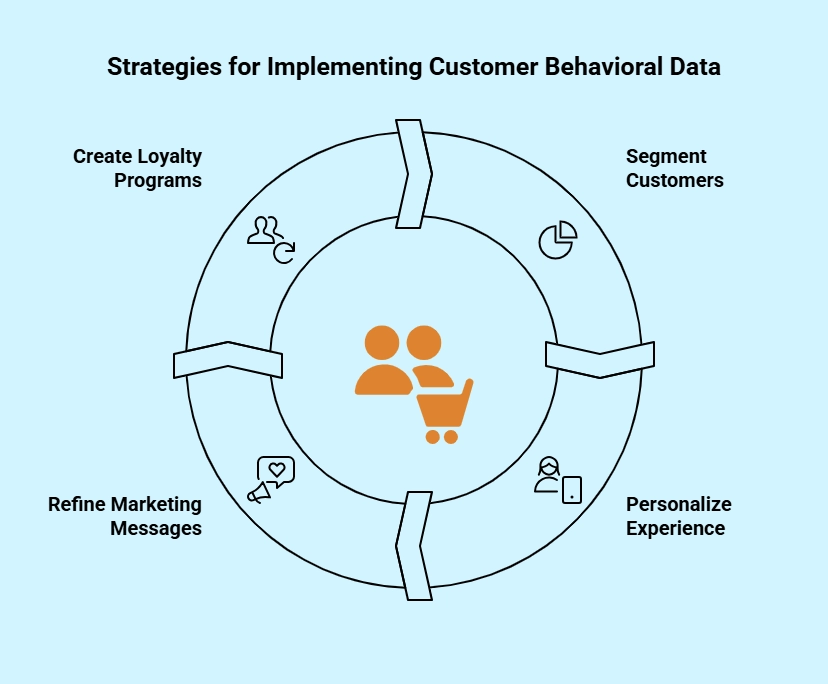
Segment your customers for more precise targeting
Customers have different needs and behaviors, and grouping them helps you understand and serve them better.
You can segment customers by age, lifestyle, job role, communication preferences, or shopping habits.
For example, a brand might use fun, casual language and emojis when speaking to Gen Z, while taking a more professional tone for older or business-focused audiences.
Use personalization to enhance customer experience
Make customers feel seen and valued by tailoring content, offers, product recommendations, and communication to their specific needs and preferences.
Refine marketing messages for lead generation
Analyze how different segments respond to emails, ads, or offers, then adjust tone, visuals, and timing to match what resonates most with each group.
Create loyalty programs to retain customers
Encourage repeat purchases and ongoing engagement by rewarding actions like buying, referring others, or interacting with your brand.
When customers feel appreciated and see value in staying connected, they’re far more likely to keep coming back.
Turn behavioral insights into exceptional customer experiences
Customer preferences are constantly evolving—shaped by trends, competition, and shifting market conditions.
The most successful businesses don’t just keep up, they stay ahead by analyzing behavior, listening to feedback, and adapting strategies in real time.
BoldDesk makes this easier with powerful tools like interaction history, feedback tracking, and analytics dashboards. With these, you can spot trends, uncover pain points, and make smarter, data-driven decisions that boost satisfaction and customer loyalty.
Ready to transform insights into action? Reach out to our support team to start creating more meaningful customer experiences and fueling long-term growth.
We hope this blog helps you to be well-positioned to understand the “why” behind customer actions. Share your thoughts in the comments section below.
Related articles
- What is Customer Responsiveness and Why Does It Matter?
- The Customer Is Always Right”: Fact or Fiction
- What Is Customer Advocacy? Definition, Strategies, and More
FAQs on customer behavior
Customer behavior should be monitored continuously, with more formal, in-depth analysis done quarterly or bi-annually.
Regular tracking helps businesses stay responsive to shifting trends and evolving customer expectations.
It’s the series of steps people go through before and after purchasing. These include:
- Need recognition: Identifying a problem or desire
- Information search: Gathering relevant data about solutions
- Evaluation of alternatives: Comparing available options
- Purchase decision: Making the final choice
- Post-purchase evaluation: Assessing satisfaction and future intentions
Customer segmentation groups consumers based on shared traits like demographics, behavior, or preferences.
This makes it easier to spot patterns, tailor messages to each group, and create more personalized, effective marketing strategies.
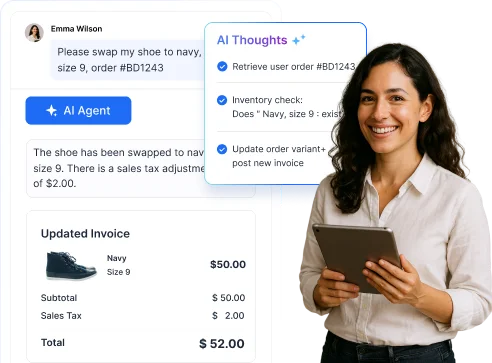


















 Email Ticketing System
Email Ticketing System Shared Inbox Software
Shared Inbox Software Multi Brand Help Desk
Multi Brand Help Desk Internal Help Desk Software
Internal Help Desk Software Trouble Ticketing Software
Trouble Ticketing Software Mobile Help Desk
Mobile Help Desk 










